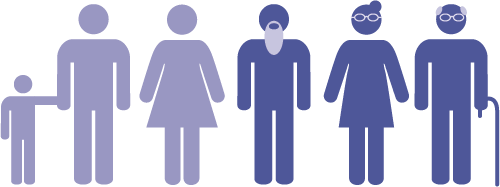About Cancer

There are many types of cancer. Cancer can start anywhere in the body. The way it grows and spreads depends on many factors, including which type of cancer it is and where it started. The longer people live, the more likely it is that they will get cancer. Today, more people are living with and surviving cancer than ever before.
Cancer in California
Despite the fact that cancer incidence and mortality rates are declining, it is estimated that nearly I out of every II Californians born today will develop cancer at some point in their lives, and it is likely that 1 in 4 people with cancer will die of cancer.
In California, more than 176,140 people will be diagnosed with some form of cancer this year.* This is equivalent to more than 20 new cases every hour of every day.


Who gets cancer?
Cancer can strike at any age. However, in California, more than 50% of the cancers diagnosed are among people aged 65 and older, who make up only about 11% of the population.
There are also differences in cancer rates among adults depending on the type of cancer and race/ethnic group.



The most common types of cancer also differ based on sex, although skin cancer is common for both sexes

For men, the most common types of cancer* are:
![]() Prostate
Prostate
![]() Lung
Lung
![]() Colorectal
Colorectal
![]() Urinary
Urinary
![]() Bladder
Bladder

For women, the most common types of cancer* are:
![]() Breast
Breast
![]() Lung
Lung
![]() Colorectal
Colorectal
![]() Uterus
Uterus
![]() Thyroid
Thyroid

Can cancer be prevented or stopped?
Many cancers can be cured if detected and treated promptly, and many others can be prevented by lifestyle changes, including avoidance of tobacco, consuming a healthy diet, and being physically active.
The current estimate in the recent California Cancer Facts and Figures is that more than 1,492,000 Californians who are alive today have a history of cancer.†Many of these individuals have no further evidence of the disease and have the same life expectancy as people who have never been diagnosed with cancer.
*This does not include people with common skin cancers.
†This does not include basal or squamous cell carcinomas of the skin or certain non-invasive cancerous conditions of the uterine cervix.

 Reporting News
Reporting News
Interested in learning more about cancer rates?
Have concerns about cancer in your community?
